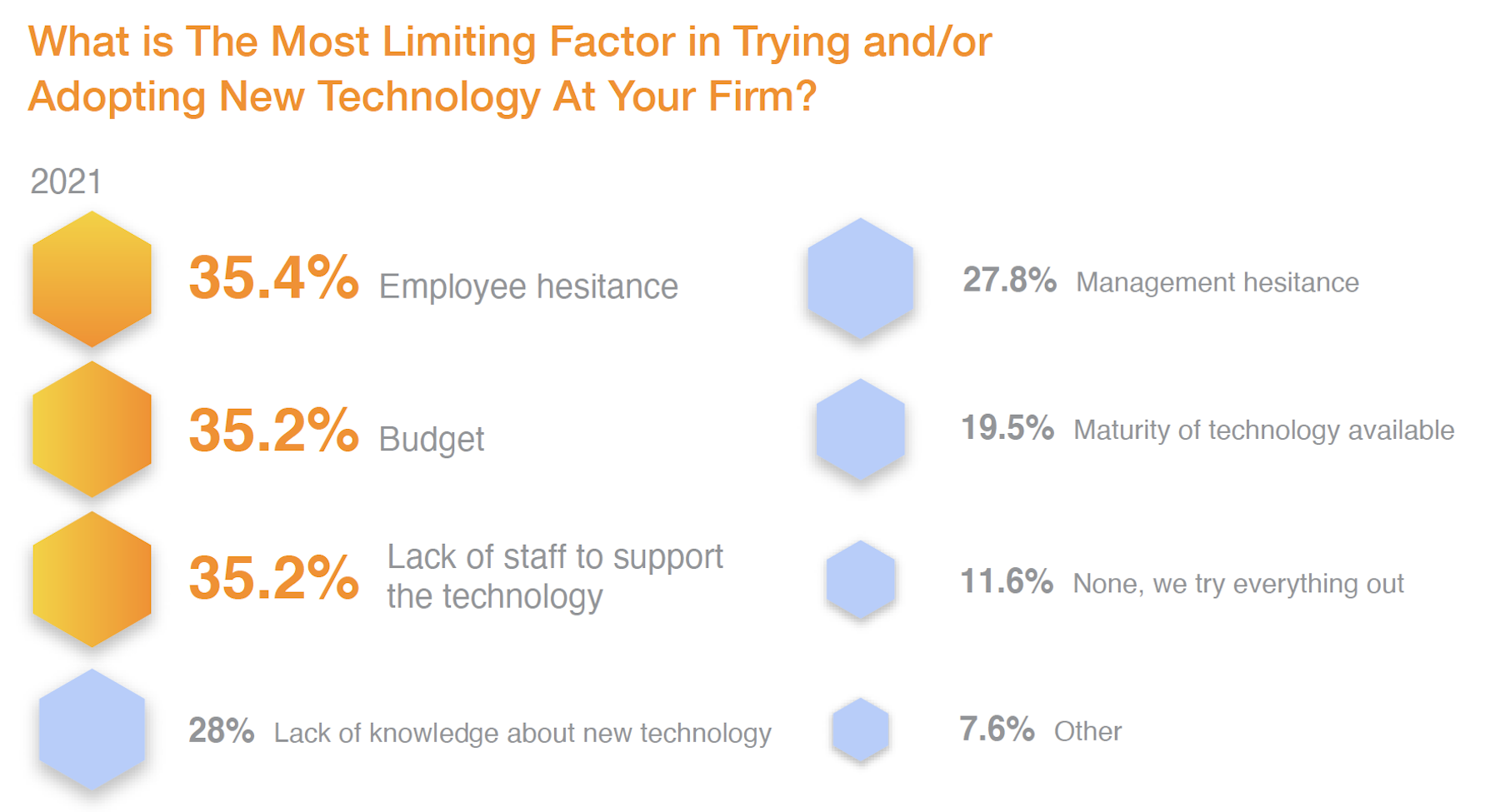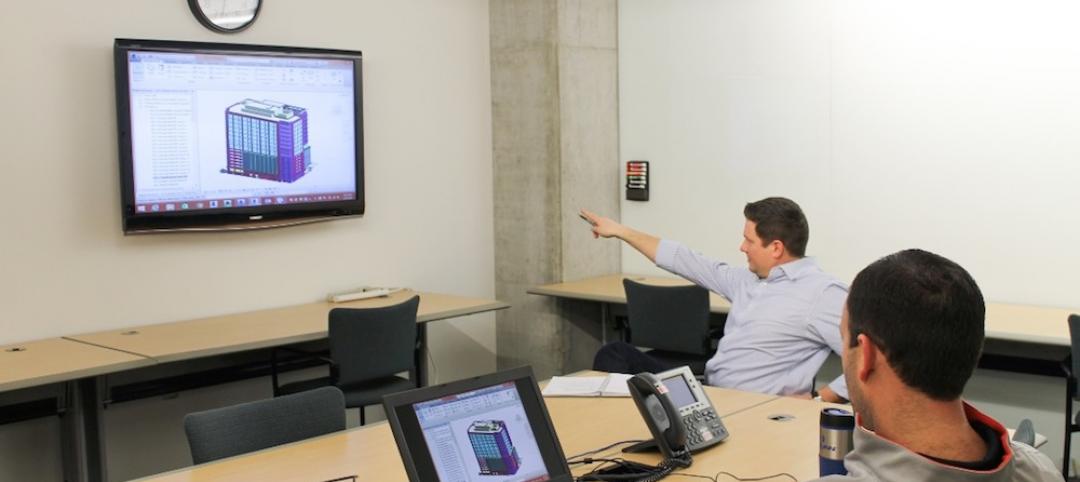In 2021, a record $4.5 billion were invested in Construction Technology startups, triple the amount in 2020, according Cemex Ventures. But there remains a disconnect between this outpouring for innovation and what’s actually being used in the field and back offices.
For example, less than half of contractor companies have departments dedicated to Information Technology, and even fewer don’t bill for IT expenditures. Over the past few years, construction companies have been reducing dedicated IT support and relying more on outsourcing some, if not all, of their IT functions.
Those are some of the findings that emerge from the 10th edition of JBKnowledge’s Annual Construction Technology Report, which was recently released. The report was produced in partnership with the Mechanical Contractors Association of America, the National Electrical Contractors Association, the Construction Financial Management Association, the Sheet Metal and Air Conditioning Contractors’ National Association, and the Construction Sciences Department of Texas A&M University.
JBKnowledge did not reveal the exact number of respondents to its survey except to tell BD+C that around 2,000 were from the construction industry in both field and administrative capacities. The survey was conducted in June and July 2021.
More than half of the total respondents to JBKnowleldge’s survey was between the ages of 42 and 61. Just over one-fifth (21 percent) was female, and the highest percentage of respondents (30 percent) was executives. Nearly three-quarters (73.8 percent) identified commercial building as their primary industry. While the survey received responses from 29 countries, 96.3 percent arrived from North America.
The report betrays an industry with too many companies that don’t prioritize IT. “Many construction companies fail to realize that an investment in IT will [lead to] greater profitability and increased ROI,” the report contends. “It’s no coincidence that construction companies are measuring on the lower-end of productivity as compared to other industries.”
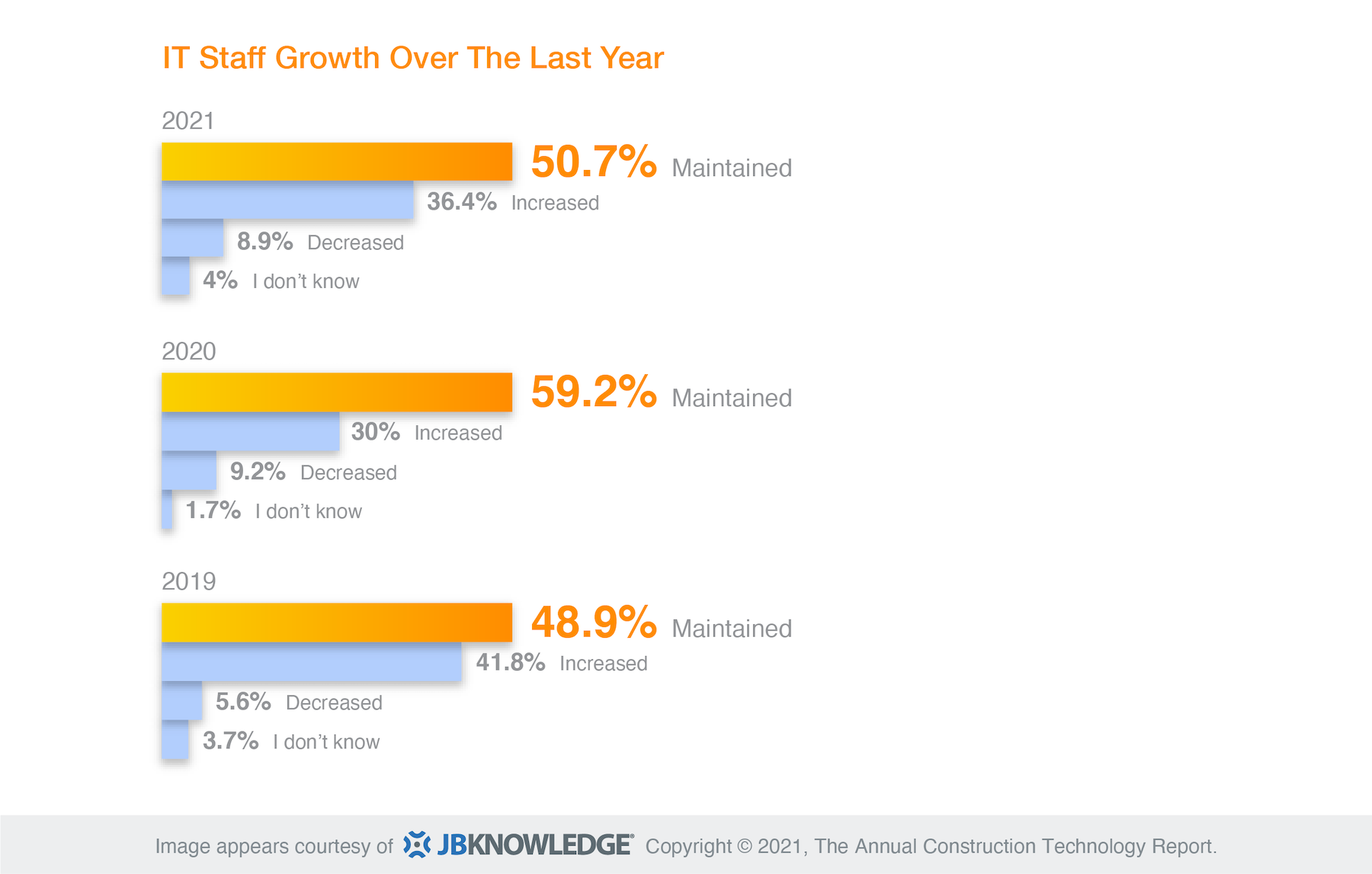
While three-fifths of those polled say their companies have between one and five employees dedicated to IT on their payrolls, more than one-third spends less that 1 percent of annual sales on IT. “Construction spending on IT is behind the curve.”
MOBILE APP INTEGRATION A CHALLENGE
The report is not without its contradictions. Respondents were generally satisfied with the IT training and resources their companies provided them. While 43.4 percent says their companies have dedicated R&D employees, 56 percent doesn’t have dedicated R&D budgets. “The most important thing to remember about Research & Development is: If you make R&D a ‘spare time’ endeavor, you will only receive ‘spare time’ results,” the report cautions.
More than half of the respondents says their companies’ cybersecurity includes using mobile device management, two-factor authentication, and cyber liability insurance. (Twelve percent of those polled says their companies experienced a data breach in 2021, and another 6 percent answered “I don’t know” to the question about breaches.)
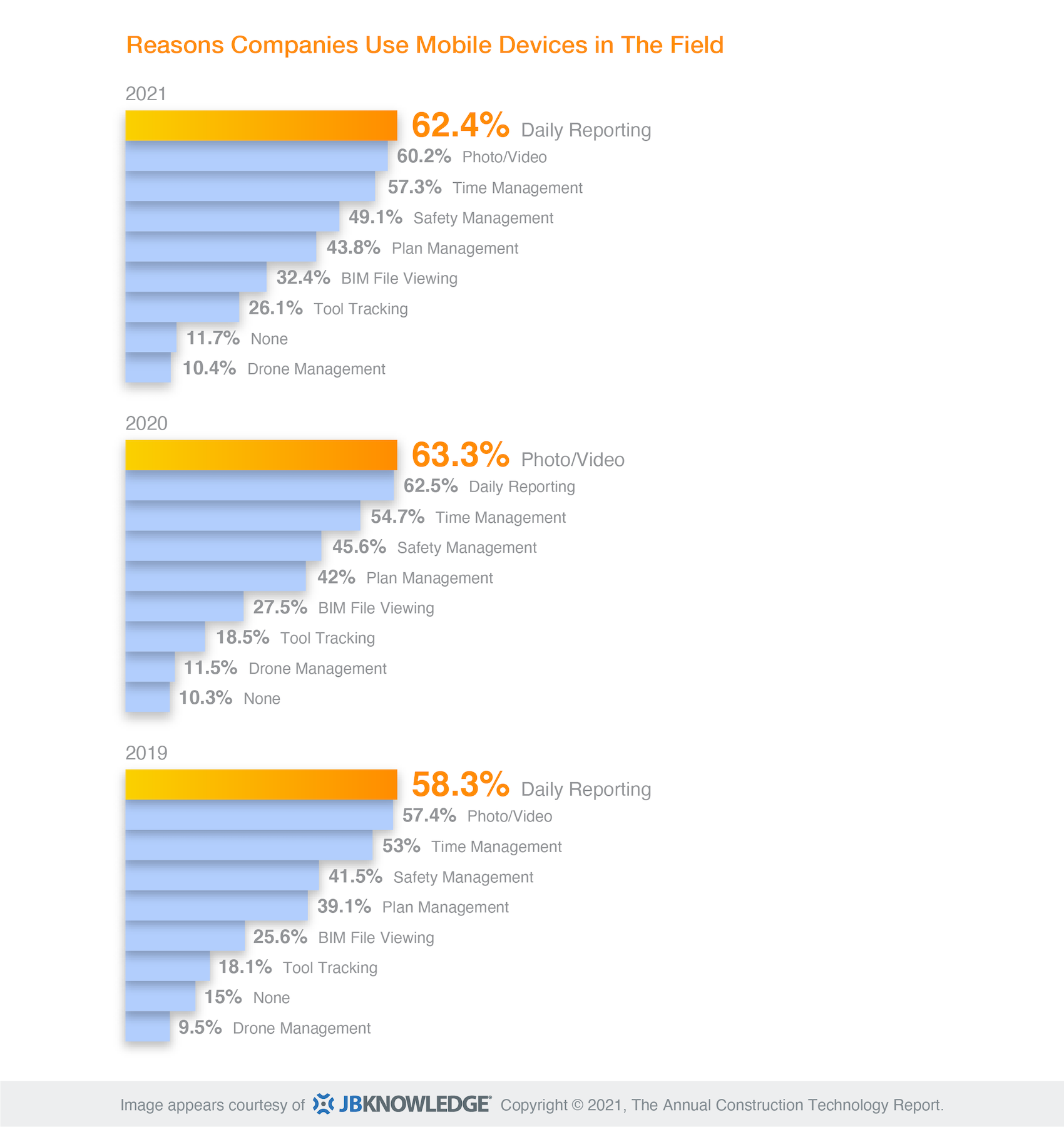
The top reason why respondents say they use mobile devices in the field is for daily reporting (62.4 percent), followed by photo/video capture (60.2 percent) and time management (57.3 percent) “Anyone who has been on the fence about whether a mobile app is necessary, the construction industry has spoken—mobile apps are key.” But technology integration remains a “big challenge” for many companies: more than half of all respondents still manually transfers data for apps without integrations. A surprising 15.3 percent of respondents doesn’t transfer data between apps at all, up from 11.8 percent in 2019.
Nearly all of those polled use smartphones for daily work purposes. But only around one-third says that their companies request that personal devices be secure and approved. (35.3 percent doesn’t use such personal devices at work.)
PREFAB A ‘COMPETITIVE ADVANTAGE’
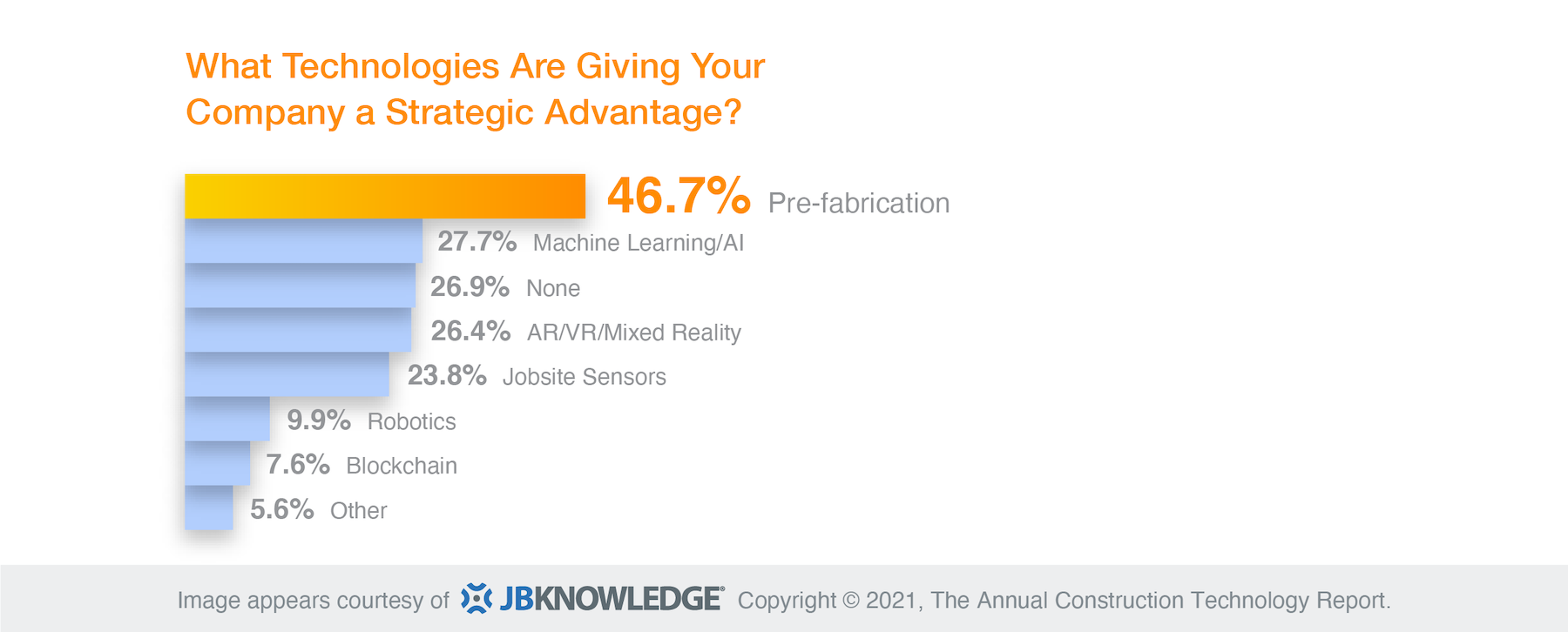
Based on the survey’s responses, Procore is the favored app for managing plans, daily reporting, safety management, time management, and image capture; Bluebeam for viewing BIM files; DroneDeploy for controlling drones; and ToolWatch for tool tracking.
Workflows likely to rely on dedicated software include accounting/ERP (83 percent), estimating (60.7 percent), and project management (58.2 percent). However, more than three-fifths of those polled say they still use spreadsheets for estimating instead of software, and more than two-fifths use spreadsheets over software for project management.
The most popular software includes Sage for accounting/ERP (21.3 percent of respondents cited it), OnScreen Takeoff for takeoffs (37.6 percent), custom in-house software for estimating (17 percent), BuildingConnected for bid management (31.2 percent), Microsoft Project for scheduling (59.8 percent), Procore for project management (46.2 percent), and Consential for client relationship management (32.4 percent).
As for tech innovations, 36.6 percent of respondents says their companies use drones on jobsites (although that percentage was down from previous years). And nearly two fifths (38.6 percent) say their companies have built with prefabricated components in the previous 12 months. Nearly half of respondents sees prefab as a competitive advantage.
Conversely, a portion of contractors still isn’t sold on Building Information Modeling (BIM): 35 percent says their firms outsource it, and 27.8 percent says their firms don’t bid on projects that involve BIM or Virtual Design and Construction (VDC). “The good news is, for the first time in the past five years more respondents reported their company had a BIM department,” the report states.
Related Stories
BIM and Information Technology | Mar 21, 2016
Latest tech devices simplify the leap from BIM to virtual reality
Faster conversion times and higher-quality graphics are enabling VR to make the jump from novelty to necessity in the AEC world.
AEC Tech | Mar 15, 2016
Two to tango: Project Tango isn’t just for entertainment, it also has a wide range of possibilities relating to the professional world
Making things like augmented reality, precise measurements of indoor spaces, and indoor wayfinding possible, Google’s Project Tango has all the makings to become a useful and ubiquitous tool in the AEC market.
BIM and Information Technology | Mar 14, 2016
Visual estimating, generative design, and component construction push the limits of BIM/VDC
DPR Construction, JE Dunn, and The Living advance the AEC industry with three clever tech solutions.
Drones | Mar 9, 2016
A new image-capturing platform mediates drone and cloud technologies
3DRobotics, Autodesk, and Sony launch Site Scan to speed the process of making models from field data.
BIM and Information Technology | Mar 2, 2016
Thanks to MIT researchers, Boston now has its very own citywide building energy model
The most detailed model ever for a city this size will help Boston meet its long-term energy use goals.
BIM and Information Technology | Feb 24, 2016
5 tips for creating photorealistic architectural renderings
Storytelling, authenticity, and detail are vital to producing lifelike project artwork, according to a digital art specialist.
Augmented Reality | Feb 17, 2016
Startup Meta unveils holographic augmented reality prototype
The startup is an underdog in the AR battle but has a range of investors and fans.
Game Changers | Feb 5, 2016
London’s ’shadowless’ towers
Using advanced design computation, a design team demonstrates how to ‘erase’ a building’s shadows.
Game Changers | Feb 4, 2016
GAME CHANGERS: 6 projects that rewrite the rules of commercial design and construction
BD+C’s inaugural Game Changers report highlights today’s pacesetting projects, from a prefab high-rise in China to a breakthrough research lab in the Midwest.
Drones | Feb 3, 2016
A new volume measurement tool makes drone imagery easier to analyze
DroneDeploy’s latest app is available for all mobile devices.


